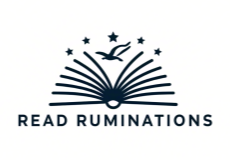Introduction
Mario Puzo’s The Godfather stands as one of the most influential novels in modern literature. Published in 1969, the book delves into the intricate world of organized crime through the lens of the fictional Corleone family. Far beyond a simple crime novel, The Godfather is a profound exploration of loyalty, power, and the moral compromises that define the human condition. As the story unfolds across post-World War II America, readers are drawn into a narrative that questions the price of ambition, the limits of family loyalty, and the complexities of justice.
This article offers a comprehensive examination of The Godfather, including its plot, characters, themes, historical context, literary style, cultural impact, and its celebrated adaptation into film. Whether you’re new to the novel or a longtime admirer, this in-depth analysis will guide you through its layered storytelling and timeless relevance.
Overview of The Godfather

The Godfather is a seminal work in crime fiction. With its roots deep in the Italian-American immigrant experience, the novel tells the story of the Corleone family as they rise to power in New York’s criminal underworld from 1945 to 1955. Opening at the wedding of Don Vito Corleone’s daughter, Connie, the novel introduces a cast of complex characters entangled in webs of power, loyalty, and betrayal.
The story captures the dualities within each character and offers a sharp commentary on the American Dream, law enforcement corruption, and societal inequities. Drawing comparisons to historical narratives like Louis Zamperini’s survival story, the novel reflects the universal struggle against systemic adversity.
Puzo doesn’t merely glamorize organized crime; instead, he presents it as a reflection of the broader failures and hypocrisies within American institutions. Through vivid characterization and a compelling plot, The Godfather solidified its place as a modern literary masterpiece that continues to influence crime storytelling across media.
Author Background and Historical Context
Mario Puzo’s life deeply informed his writing. Born in 1920 to Italian immigrants in New York City, Puzo grew up in a tight-knit, impoverished community that shaped his views on family, honor, and survival. These themes are central to The Godfather and reflect his intimate understanding of the immigrant experience.
Puzo’s financial struggles and desire for commercial success led him to write a novel that would appeal to a wide audience, while still embedding his deep observations on human nature and societal failure. The late 1960s—a time of political unrest, civil rights activism, and skepticism toward authority—provided the perfect backdrop for a story that dissected institutional corruption.
Key Influences:
- Cultural Heritage: Italian traditions of familial honor and loyalty permeate the narrative.
- Historical Context: The postwar American landscape, marked by economic opportunity and social tension, offers fertile ground for organized crime.
- Personal Insight: Puzo’s first-hand experience with poverty and marginalization enabled him to write compelling, authentic characters.
Setting and Timeline
The novel is predominantly set in New York City and occasionally shifts to Sicily and Las Vegas. These varied settings highlight the intersection between traditional Sicilian values and the rapidly modernizing American society.
Timeline Highlights (1945-1955):
- 1945: Begins with Connie Corleone’s wedding, introducing the family’s influence and alliances.
- Mid-1940s: Vito Corleone survives an assassination attempt, igniting a power struggle.
- Late 1940s: Michael Corleone kills Sollozzo and McCluskey, setting off a chain of events that change his life.
- Early 1950s: Sonny’s murder and Michael’s exile in Sicily deepen the family’s woes.
- 1955: Michael returns, assumes control, and orchestrates a strategic power grab.
These settings and the historical context paint a nuanced portrait of a family navigating survival, tradition, and modern ambition.
Plot Summary and Key Events

The Godfather weaves a compelling story that hinges on pivotal turning points and intricate family dynamics.
Major Plot Points:
- Connie’s Wedding: Introduces key characters and the structure of mafia society.
- Vito’s Shooting: Catalyzes Michael’s descent into the underworld.
- Michael’s First Kill: The murder of Sollozzo and McCluskey marks his transformation.
- Sonny’s Death: Escalates the family war and highlights the dangers of impulsiveness.
- Michael’s Rise: He consolidates power, making calculated moves to protect the family.
- Baptism and Betrayal: Michael orchestrates a violent purge of enemies while attending his nephew’s baptism, symbolizing the duality of his role as protector and destroyer.
Character Development and Dynamics
Michael Corleone: Michael’s arc is one of literature’s most compelling transformations. Beginning as an idealistic war hero, he becomes the very embodiment of his father’s legacy—a calculating and ruthless Don. His journey is marked by moral compromise, internal conflict, and emotional detachment.
Don Vito Corleone: The patriarch leads through respect, strategy, and limited violence. Unlike Michael, Vito believes in peace and negotiation. His wisdom and charisma command loyalty, shaping the Corleone family’s influence.
Sonny Corleone: Impulsive and hot-headed, Sonny contrasts with both his father and brother. His brashness ultimately leads to his downfall, illustrating the perils of unchecked emotion.
Fredo Corleone: Fredo’s insecurity and need for recognition make him a tragic figure. Overlooked and undervalued, his actions later foreshadow betrayal.
Kay Adams: Michael’s wife serves as the moral compass. Her gradual alienation from Michael symbolizes the cost of power and deception.
Major Themes Explored

1. Loyalty and Family: Loyalty is both a virtue and a weapon in The Godfather. It binds characters together while also enabling betrayal. The family is the primary institution, transcending legal or moral boundaries.
2. Power and Corruption: Power is portrayed as inherently corrupting. Michael’s evolution shows how ambition and responsibility can destroy personal integrity.
3. The Immigrant Experience: The novel critiques American institutions that fail immigrants, prompting some to turn to alternative systems like the mafia for protection and success.
4. Justice and Morality: The Godfather explores the moral ambiguity of justice. The legal system is flawed, prompting characters to create their own codes.
5. Identity and Transformation: Characters evolve—often tragically—as their identities shift under the weight of responsibility, power, and betrayal.
Writing Style and Literary Structure
Puzo’s style is accessible, rich in dialogue, and layered with exposition. His narrative structure features multiple interwoven stories, offering a panoramic view of the Corleone world.
Strengths:
- Realistic dialogue that reflects cultural and emotional nuance.
- Strong pacing early in the novel with tension built around critical events.
- Layered characterizations that add moral and emotional complexity.
Limitations:
- Some subplots may seem tangential or overly detailed.
- Michael’s transformation, while powerful, could benefit from deeper psychological insight.
Cultural Impact and Legacy
Influence on Crime Fiction: The Godfather redefined the genre. It moved away from the simplistic good-vs-evil tropes and introduced morally complex antiheroes. It inspired countless books, films, and television shows, including The Sopranos and Scarface.
Representation of Mafia Culture: The novel shaped public perception of the mafia, blending reality with myth. It highlighted both the brutality and the tight-knit familial loyalty within organized crime.
Sales and Enduring Popularity: By 1975, the novel had sold over 12 million copies. Today, it remains a cultural touchstone and a must-read for fans of crime fiction and literary drama.
Comparison to Film Adaptation
Francis Ford Coppola’s 1972 film adaptation is widely regarded as one of the greatest movies ever made. However, there are notable differences between the book and the film.
Character Differences:
- Michael’s emotional journey is more vividly explored in the novel.
- Fredo’s backstory and vulnerability receive greater attention in the book.
- Don Vito’s complexity and backstory are more fully developed.
Narrative Differences:
- Subplots involving secondary characters like Johnny Fontane and Lucy Mancini are trimmed or removed.
- The film maintains the story’s core integrity while simplifying its structure for cinematic purposes.
Memorable Quotes and Their Significance
- “I’m gonna make him an offer he can’t refuse.”
- Symbolizes coercive power and negotiation by intimidation.
- “Never hate your enemies. It affects your judgment.”
- Highlights the strategic, emotionless mindset required for survival.
- “A man who doesn’t spend time with his family can never be a real man.”
- Underscores the novel’s emphasis on familial loyalty and masculine duty.
Reader Experience and Engagement
Puzo’s vivid world-building and emotionally charged character arcs captivate readers. Themes of loyalty, betrayal, and identity resonate universally, making the story deeply personal and culturally significant.
Engaging Elements:
- Emotional tension in Michael’s transformation.
- Realistic portrayals of family dynamics and power struggles.
- Immersive descriptions of setting, culture, and tradition.
Recommendations for Further Reading
For readers intrigued by The Godfather, consider the following:
- “The Family” by Mario Puzo – A historical look into the origins of the Corleones.
- “Wiseguy” by Nicholas Pileggi – The real-life story behind Goodfellas.
- “Donnie Brasco” by Joseph D. Pistone – Undercover insights into mafia life.
- “The Sicilian” by Mario Puzo – A spiritual sequel to The Godfather.
- “The Sopranos” by Allen Rucker – A literary guide to the HBO series.
Conclusion
The Godfather is more than a novel about organized crime—it’s a complex tale of family, ambition, and moral ambiguity. It captures the essence of a transformative period in American history while exploring timeless questions about power and identity. Selling over 9 million copies worldwide and inspiring generations of storytellers, The Godfather remains a landmark in modern literature. If you haven’t yet read it, now is the perfect time to immerse yourself in the compelling world Mario Puzo created.



